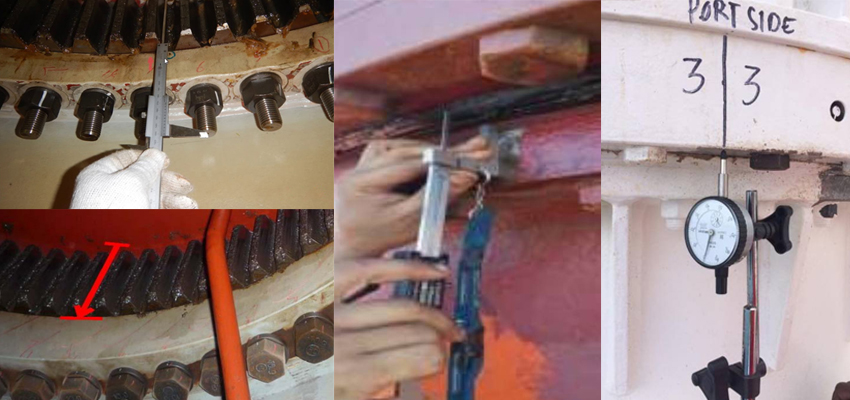Pedestal Crane Rocking Motion Test

What is Rocking test of Deck Crane?
- Rocking test of deck crane is carried out to ascertain the wear down of the sleeve bearing of the deck cranes by measuring the play (relative movement) between the inner and outer bearing race. This measurement indicates the rate of wear.
- Usually the wear down is also identified by analyzing the grease sample taken from the bearing housing.
- The Rocking Test needs to be carried out according to manufacturer recommendation.
- No loads shall be to the crane hook, positions below are usually marked and used always as a datum reference.
- Measurements are typically taken in four positions on the slew bearing, with the jib pointing:
- Extended towards forward
- Extended Towards aft
- Hard to port side
- Hard to starboard
- ‘Rocking tests’ are carried out every six months and that the results are recorded and monitored in order to ensure the wear tolerances remain within the limits.
Procedure of rocking test of deck crane
Preparation
- The ship is adjusted to have least possible trim, preferably on even keel.
- Bad weather / Windy situations are avoided.
- No cargo or bunkering operation is permitted.
- Crane hook is free of any load.
- A properly working and calibrated dial gauge is used and not a Vernier caliper.
Procedure
- Usual rocking test reference points usually two of them on the front and rear bottom plate of the crane. These points are always used for such tests.
What is the action taken if deviation is out of limit?
- Measurements are recorded every 6 months and if wear rate is seen increasing, the greasing is to be increased. While adding grease, the bearings should be rotated to spread the grease throughout. Pump in until old grease squeeze past the seal (Purging)
- Purged grease carries contaminants out of the bearing. Rubbing between your finger and grit or metal chips is felt, it indicates a bearing wear.
- Grease tends to dry out over long periods of time, allowing condensation to form within a bearing. It is avoided by introducing grease at least every six months, even when the crane is idle.
- If wear is out of limit, then the bearing is to be replaced, if the life time of the wear is pre-mature then the reason for the same needs to be investigated.
- If the wear is close or on the limits, operating the cranes less than the max SWL and hoisting with the extended jib is to be restricted. Operate the jib within less outreach.
